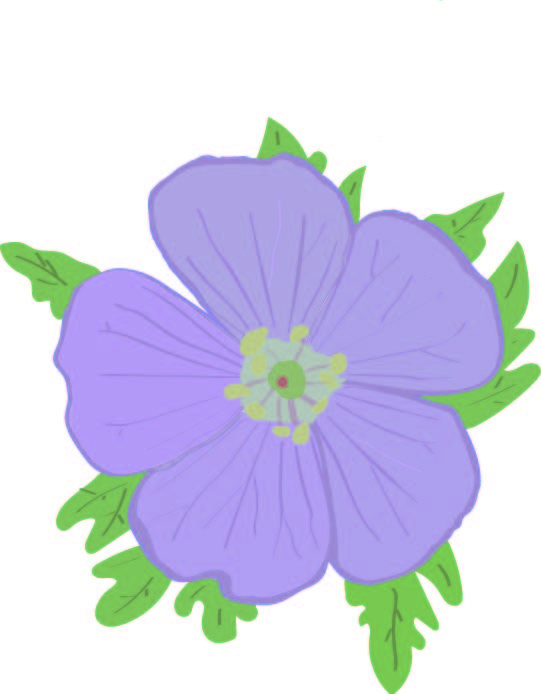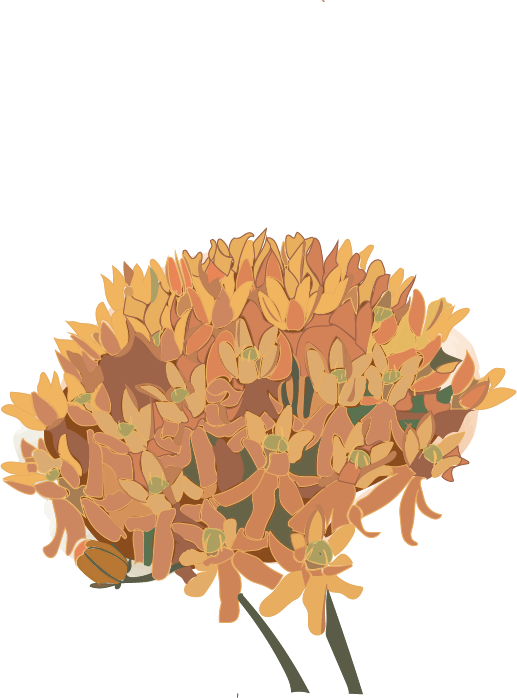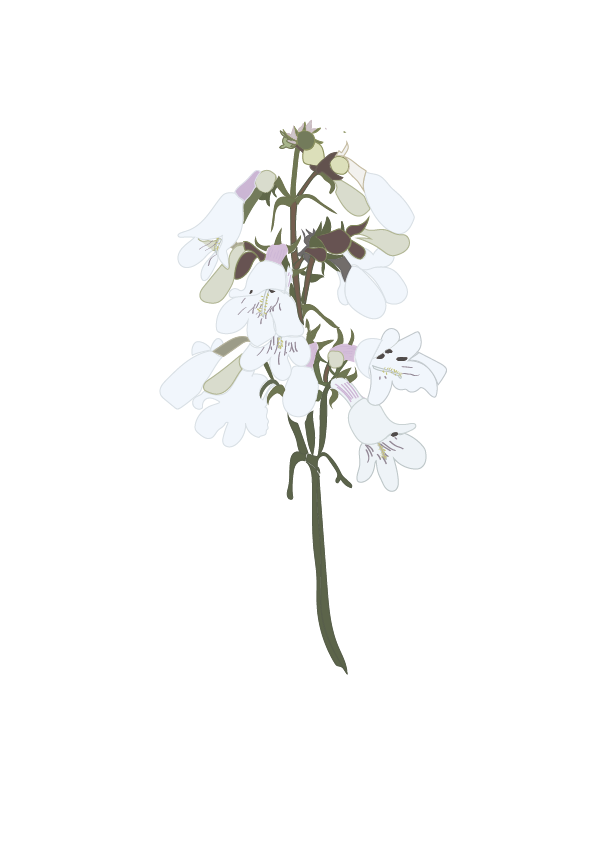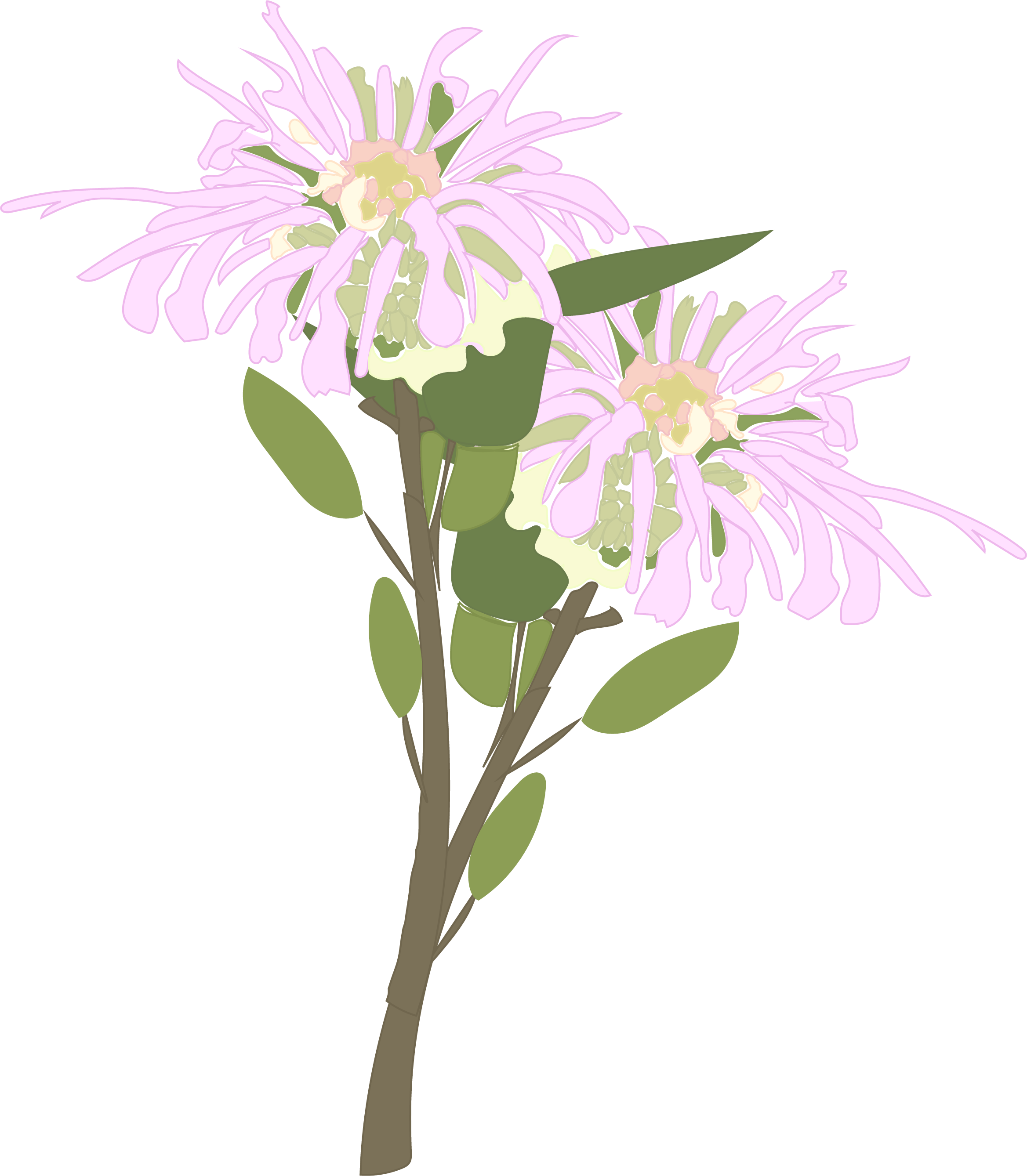Native Pollinator Plant Profiles
Native Pollinator Plant Profiles review native flowering plant species to Massachusetts that offer floral rewards to pollinators. Read on to learn more about these plants, many of which are native far beyond our state lines. This page will be updated frequently with new plants, so check back in regularly to stay up-to-date! All plant graphics made by Nicole Bell. Contact for use permission.

Wild geranium (Geranium maculatum): This plant is a wonderful addition to pollinator habitat. Offering both a nectar and pollen reward, it supports bees, other insects, and birds.
AT A GLANCE:
- Native range: Much of central and eastern U.S.
- Type: Herbaceous perennial
- Growth habit: Dense clumps 1-2 ft tall, 1-1.5 ft wide
- Bloom time: Spring (April-May), 6-7 weeks
- Grows best in: Shady garden borders, partial sun*
- Rewards offered: Nectar and pollen
- Specialist bees supported? Yes
Plants can be grown from seed or from plugs. It’s a long-lived plant that serves well as a perennial ground cover in gardens, due to its relatively low and dense growth habit. This is a low maintenance plant, but wild geranium can be shaped with a light shearing for aesthetic purposes after flowering.
Geranium maculatum is a great choice to support the specialist bee Andrena distans, which relies on geranium to survive and reproduce.
Bonus points: reported to be both drought resistant and bunny resistant once established. Bunnies may still munch on young plants, so using a small metal cage around the plant and at least 2 inches into the soil can help prevent damage.
*Wild geranium can thrive in full sun if there is adequate soil moisture. It is an adaptable plant and can manage a variety of soils and sunlight exposure levels.

Butterfly weed (Asclepias tuberosa):
AT A GLANCE:
Native range: Much of the United States*
Type: Herbaceous perennials
Growth habit: Clumps 1-3 ft tall, up to 2 ft wide
Bloom time: Spring/summer (June-August), ~8 weeks
Grows best in: Full sun, medium-dry soils
Rewards offered: Nectar and pollen
Specialist bees supported? None documented
Butterfly weed, or Asclepias tuberosa, is a recognizable milkweed spceies native to Massachusetts. With large clusters or orange flowers, it offers both a pollen and nectar reward to insect pollinators.
*It's native to most of the United States, besides the Pacific Northwest and select states, including Nevada and North Dakota.
This species also serves as an important food source for Monarch butterfly larvae. Butterfly weed, though, attracts far more than just butterflies. Butterflies, hummingbirds, bees, and beyond visit Asclepisa tuberosa to feed.
One of the best parts about this species is that it's easy to grow and does well from seed. It tolerates drought and is resistant to deer.
Foxglove beardtongue (Penstemon digitalis):
AT A GLANCE:
Native range: Eastern and southeastern U.S.
Type: Herbaceous perennial
Growth habit: Clumps 2-5 ft tall, up to 2 ft wide
Bloom time: Late spring (April-June), ~8 weeks
Grows best in: Full sun, well-drained soils
Rewards offered: Nectar and pollen
Specialist bees supported? Yes
Penstemon digitalis, sometimes known as foxglove beardtongue, is a great native plant to enhance pollinator habitat. Its common name is derived from its visual similarity to foxglove, although it lacks any toxicity to humans or animals that true foxgloves have.
Blooming in the late spring, P. digitalis offers both a nectar and pollen reward to insect visitors. It also supports a specialist bee: Osmia distincta, a mason bee recorded in eight counties in Massachusetts.
Water until plants are established. Although it can tolerate some drought once established, it does best in soils that are watered or receive sufficient moisture.

Bee Balm (Monarda fistulosa):
AT A GLANCE:
Native range: Much of U.S.*
Type: Herbaceous perennial
Growth habit: Readily spreads, 2 – 3.5 ft tall, up to 1.5 ft wide
Bloom time: Midsummer – fall, ~ 6 weeks
Grows best in: Full sun or partial shade
Rewards offered: Nectar, pollen
Specialist bees supported? None documented**
The genus Monarda, also known as bee balms or wild bergamot, are popular plant selections for pollinator habitat. Monarda fistulosa and M. didyma are both native to Massachusetts. Bee balms come in different shades, including scarlet, with M. fistulosa known to be more of a pink color.
Like many other plants in the mint family, Monarda sp. abound with bees, birds, and insects alike.
While you can grow bee balm from seed or cuttings, you can also take advantage of their tendency to divide by digging up a plant in the fall and dividing it by its roots. They are considered drought tolerant, but it’s best to plant them where the soil receives regular moisture.
*Different Monarda sp. have different native ranges, including some found in western states like Oregon. Monarda fistulosa is found mostly east of the Rocky Mountains.
**No bees documented in Massachusetts specialize on Monarda sp., though some bee species do specialize on Monarda, including Perdita gerhardi.

Black-eyed Susan (Rudbeckia hirta)
AT A GLANCE:
Native range: All of eastern and central U.S., most of western U.S.
Type: Herbaceous perennial
Growth habit: Clumps 2-3 ft tall, 1-2 ft wide
Bloom time: June - late summer
Grows best in: Full sun, dry soils
Rewards offered: Nectar and pollen
Specialist bees supported? Yes
This distinct flowering plant in the Asteraceae family is a great selection in terms of its ease of management and pollinator support capacity. This plant supports numerous specialist bees documented in Massachusetts, including but not limited to Pseuopanugus andrenoides, Melissodes agilis, and Melissodes subillatus.
They sometimes start blooming as eatly as June, though many begin in July and may continue until the first frost. This species is mostly drought tolerant, as well as supposedly deer and bunny resistant.

Goldenrod (Solidago sp.)
AT A GLANCE:
Native range: Varies by species
Type: Herbaceous perennial
Growth habit: Upright, up to 5 ft tall, long stems
Bloom time: July - September, sometimes later
Grows best in: Full sun, dry to semi-moist soils
Rewards offered: Nectar and pollen
In the Asteraceae family, Solidago sp. have a distinct upright growth habit with an abundance of flowers. Different species of goldenrod are found across the United States.
Due to their late blooming season, they are a wonderful option to support late-season pollinators. Some goldenrods may bloom until the first frost, which is partiuclarly beneficial for new queen bumble bees working to build up their fat stores before they overwinter. Some additional benefits to goldenrod include its adaptability to a variety of growing conditions. It can spread quite vigorously but serves well in garden borders or in meadow-style habitats.
